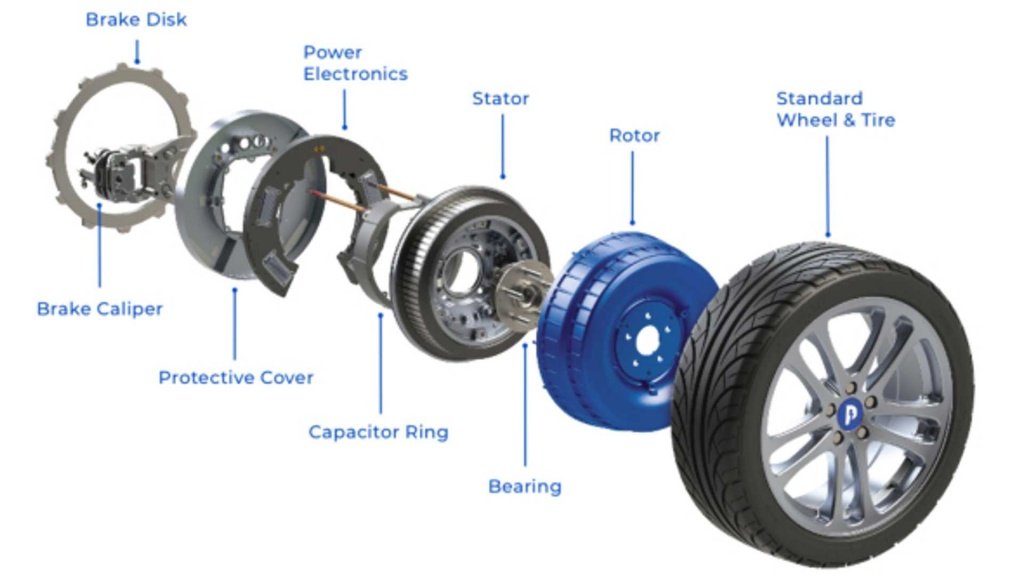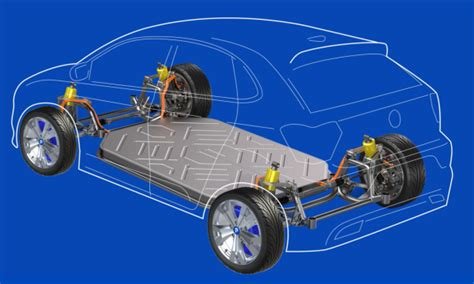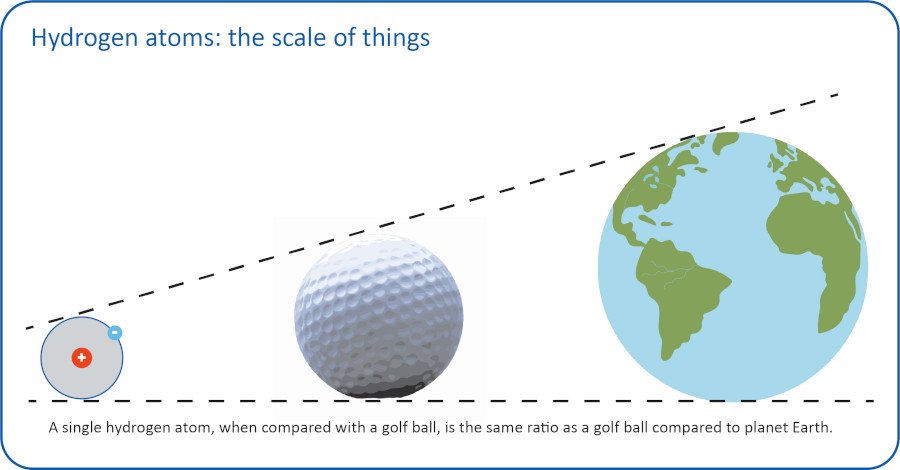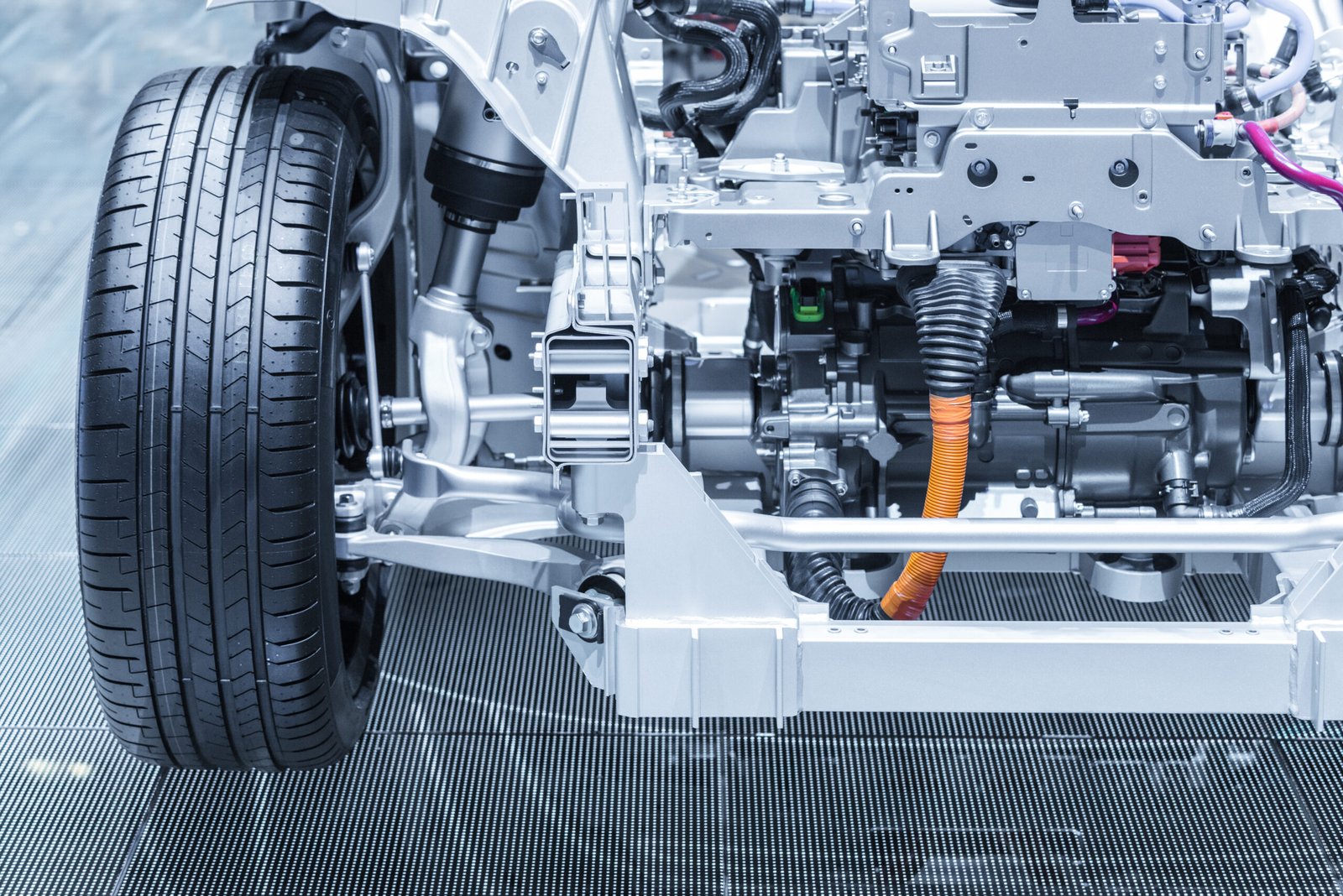In-wheel motors can be used to deliver the ‘torque vectoring’ strategies present in many high performance vehicles. In this article we discuss many other potential areas where independent wheel torque can improve the value proposition of non-performance market segments
Dr Richard Ford, Vehicle Engineering and Controls Manager, Protean Electric
Introduction
Torque vectoring, or perhaps more accurately termed, torque biasing, is becoming more common on high performance vehicles as a way to deliver improved cornering performance. This is achieved by adding yaw moment onto the vehicle via active differential, brakes or other mechanical solutions. The flexibility of independent wheel torque control via in-wheel motors means that standard torque vectoring strategies are simple to implement using software only. However the benefits of true high bandwidth independent wheel torque control go far beyond simple torque vectoring and can bring efficiency, safety, dynamics, cost and time-to-market benefits to all market segments.
In order to achieve maximum benefit the platform concept and design process must be optimised to make best use of the unique characteristics of in-wheel motors.
Efficiency benefits
Traditional vehicles and electric vehicles powered by conventional eAxles incur rolling losses as a result of inefficient suspension and steering kinematics. Traditional vehicles are setup with a slight toe in on each of the four wheels to provide driving stability (the wheels are not parallel but instead are slightly ‘pigeon toed’); this approach increases wear on tyres and incurs energy losses. For 100km travelled, each tyre can be dragged the equivalent of up to 500m in the lateral direction. In contrast, a vehicle driven by IWMs can be configured for minimum rolling resistance with stability delivered by the high bandwidth individual wheel torque dynamics.
Vehicle manufacturers have opted for a trail and caster set-up on their vehicles to deliver desired handling characteristics. These characteristics have become ingrained in many steering system designs as manufacturers chase the driving feel that will differentiate them from the other brands. Unfortunately, while this set-up delivers good steering feel, increasing mechanical trail also leads to increased losses in the power steering system as steering loads are increased. Removing these mechanical characteristics and replacing them with software controlled systems can reduce some of these steering system inefficiencies.

Safety benefits
In-wheel motors provide greater control of vehicle dynamics – especially with a motor at each wheel. Reduced stopping distances, better obstacle avoidance, the ability to run on low-friction surfaces, and bi-directionality all bring a host of safety advantages.
Stopping distances on vehicles with IWMs can be significantly reduced through torque modulation, while the performance of an ABS system on a conventional vehicle is limited by the response of the hydraulic actuators and speed sensors. The speed sensing requirements of an in-wheel motor and the speed of response of the torque delivery (only the tyre dynamics remain) naturally lead to a significantly improved slip control potential. To recover the full potential on varying grip surfaces, coordination with the steering system is required, and this is achievable thanks to the highly deterministic nature of the torque delivery from an IWM.
A car’s tendency to understeer, allowing the driver to safely manage the car at the limit of grip, is an important consideration for vehicle manufacturers and providers. But this comes at the cost of the front suspension set-up on a standard passenger car, which is often detuned to deliver the ideal characteristics – the front wheels meeting the limit of grip before the rear wheels.
in-wheel motors fulfil requirements from manufacturers eager to meet the demands and needs of changing vehicle ownership and usage models.
If we use the in-wheel motors to give the desired understeer characteristics then there is no need to detune the suspension. Thus the vehicle naturally has improved ultimate grip in critical situations.
In modern steering systems there is a high degree of electronic control, and this is set to increase as the mechanical link from wheels to driver is phased out. The safety implications of this are very challenging and manufacturers are working hard to find acceptable solutions. At a vehicle level, one potential option is to have completely separate systems on the vehicle that can deliver yaw moment on the car to direct the car safely to the side of the road in the event of loss of primary steering control. This is entirely within the scope of an in-wheel motor equipped vehicle and means that the level of design effort and validation on the primary steering system is more manageable. The same redundant functionality is also naturally available for the braking system, where a high level of retardation is available from the IWM.
Driving dynamics benefits
Even at low speeds, the driving feel of a vehicle can be significantly changed and enhanced using independent torque control. Steering is more responsive both in transient steering movements, like lane changes, and in steady state cornering. Since this behaviour is entirely software controlled, the agility of a vehicle can be enhanced at low speed, while sensitivity reduced (hence the feel of stability improved) at higher speeds. In a similar way to the suspension design, this capability removes one of the traditional trade-offs faced when designing a steering system and allows further improvements to the vehicle’s appeal, via reduced cost or enhanced functionality.
Vehicle time to market benefits
Since a number of the suspension/steering characteristics can now be achieved via software control of the IWM, there is potential to simplify the mechanical design of these systems, reducing the cost of these subsystems and leading to increased commonality between vehicle platforms. Increased reusability of these subsystems will give cost and time-to-market benefits. This may well lead to ‘skateboard’ chassis being applied to numerous quite different vehicles with very different exterior designs and interior layouts that share compact corner modules.
Further time-savings are realised due to reduced need to tune the chassis hardware for each specific application. Moving vehicle functions from hardware to software not only delivers enhanced functionality, but each iteration is quicker and the whole process is more suited to model-based calibration techniques.
The in-wheel motor advantage over inboard motors
For simple understeer/oversteer correction using the current generation of vehicles, the response of the torque vectoring system can be relatively slow as it only needs to compensate for the relatively slow gross vehicle cornering characteristics. To achieve the faster yaw response required to deliver vehicle stability and disturbance rejection then the shaft dynamics, hydraulic delays and backlash become limiting factors. To achieve the full potential, the motor should drive directly to the contact patch. This is only possible with a direct drive in-wheel-motor such as the ProteanDrive system.
Summary
In summary, in-wheel motors fulfil requirements from manufacturers eager to meet the demands and needs of changing vehicle ownership and usage models. The capabilities of in-wheel motors go further than packaging, flexibility and simplicity of components; they reward users with advanced technology for smooth and continuous wheel movements. This ability introduces outstanding agility on busy urban streets and dynamic handling capabilities for improved driving experience and safety.
Dr Richard Ford, Vehicle Engineering and Controls Manager, Protean Electric












